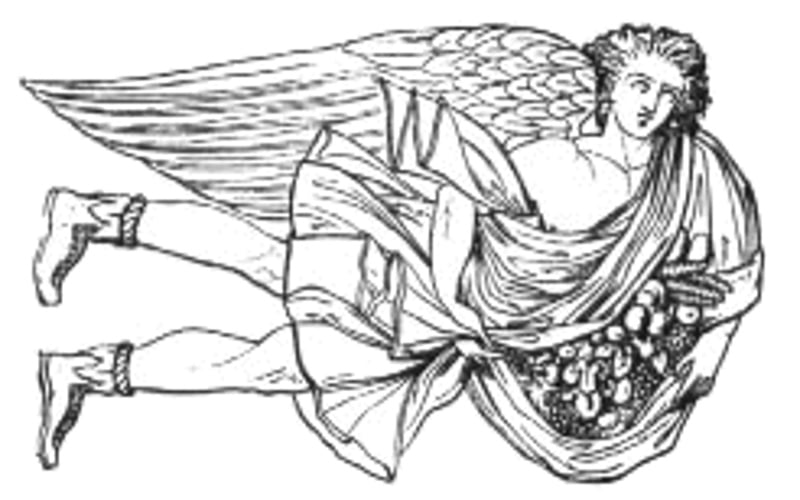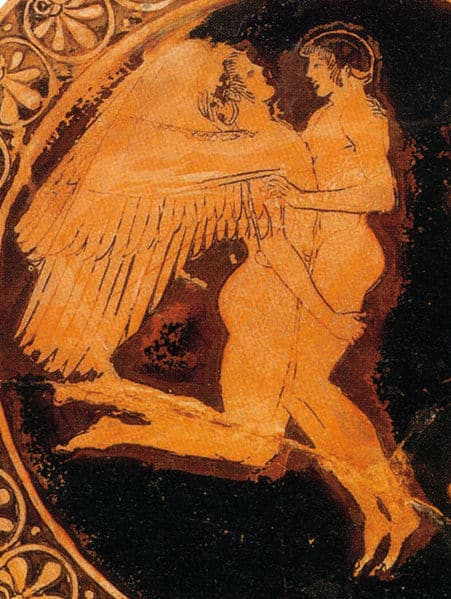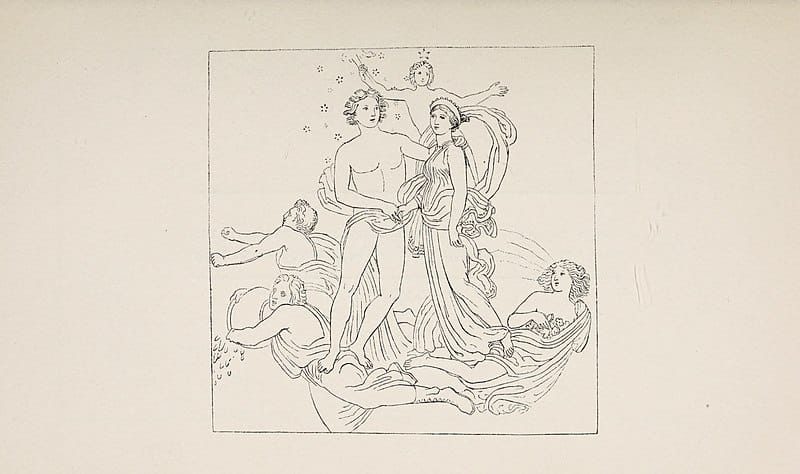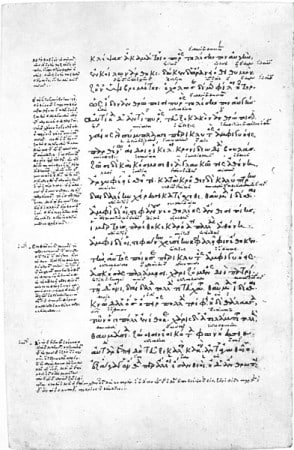In the vast and intricate tapestry of Greek mythology, the name Astraeus often echoes with a subtle yet profound resonance. This ancient Titan, whose name is synonymous with dusk, holds a unique place amidst the pantheon of divine beings. The tales surrounding Astraeus are not merely stories, but a testament to the Greeks’ understanding of the natural world and its divine orchestration.
Astraeus, often overshadowed by his more famous counterparts, embodies the inevitable transition from daylight to darkness. His existence is a poetic expression of the ancient world’s rhythm, a rhythm that was deeply revered and reflected in the lives of the ancients.
Astraeus Key Facts
| Parents | Crius and Eurybia |
| Partners | Eos |
| Siblings | Pallas, Perses |
| Offspring | The Anemoi and Astra Planeta |
| Other names | N/A |
| Roman name | Astraeus |
| The God of | Dusk, Stars and Planets |
| Symbols | Stars, the Horizon |
Name and Etymology
The name Astraeus is derived from the ancient Greek word ‘Ἀστραῖος’ (Astraios), which is closely related to ‘ἀστήρ’ (astēr), meaning star. This etymology is a clear reflection of the Titan’s dominion over the dusk sky adorned with twinkling stars. The Romans, with their penchant for adopting and adapting Greek deities, embraced Astraeus as well, though his name remained unchanged in the transition.
In the realm of epithets and alternative names, Astraeus remains relatively unadorned. Unlike many other Greek deities, his name doesn’t morph across cultures and tales, perhaps a testament to his unique and unambiguous domain over the twilight sky. His narrative is straightforward, yet imbued with the mystique of the cosmos, a realm that was as enigmatic to the ancients as it is to us today.
The Roman equivalence didn’t bring about a new name or persona for Astraeus, which is a deviation from the usual pattern where Greek deities acquire a Roman persona with distinct characteristics. This consistency in name and persona across cultures underscores the universal reverence for the celestial phenomena he embodies.
Astraeus Origins
Astraeus was born to the Titan Crius and the goddess Eurybia, a lineage that ties him to the primordial essence of the cosmos. His siblings, Pallas and Perses, share with him the grandeur and the mystery of the celestial realms, though each in their unique way. The Moirai, commonly known as the Fates, are primarily believed to be daughters of Nyx, but some ancient sources list Zeus and Themis as their parents. This connection, albeit indirect, weaves Astraeus into the larger narrative of divine governance over mortal destiny.

The birth of Astraeus, like many of his kind, isn’t accompanied by elaborate tales or dramatic events. His emergence into the cosmos is a serene transition, much like the dusk he governs. The ancient texts don’t provide a detailed account of his childhood or any special events marking his early existence, which is in stark contrast to the often tumultuous and eventful early lives of other divine beings.
Astraeus’ role as a personification of dusk and a Daemon (Spirit) in Greek mythology is a poetic acknowledgment of the natural world’s rhythm. His union with Eos, the dawn, symbolizes the eternal dance of day and night, a dance that orchestrates the rhythm of existence not only on earth but across the cosmos. This divine choreography was a subject of reverence and contemplation for the ancient Greeks, who saw in it the hand of destiny shaping the mortal and immortal realms alike.
Astraeus Lovers and Relationships
Astraeus’ love story is a celestial romance that beautifully encapsulates the ancient Greeks’ perception of the natural world’s rhythm. His union with Eos, the rosy-fingered goddess of dawn, is a poetic representation of the eternal dance between day and night.
Eos (Dawn)
The love between Astraeus and Eos is a tale of cosmic harmony. Their union is not merely a romantic alliance but a divine orchestration that brings forth the rhythm of day transitioning into night and vice versa. Every morning, Eos rises from the embrace of Astraeus, painting the sky with the rosy hues of dawn, embarking on her daily journey across the sky. As dusk approaches, she reunites with Astraeus, marking the end of day and the beginning of night.
Their relationship, though not fraught with the drama and tumult that characterize many divine romances, holds within it a profound symbolism. It’s a reminder of the natural world’s inherent harmony, a harmony that resonates with the core of existence. Through their union, the ancient Greeks found a poetic expression for the cyclical nature of time and the seamless flow of cosmic order.
Astraeus Children
The offspring of Astraeus and Eos are embodiments of various natural phenomena, each playing a unique role in the grand scheme of the cosmos. Their children are not merely divine beings but personifications of the elements and celestial bodies, reflecting the ancient Greeks’ attempt to understand and personify the natural world’s forces.
The Anemoi (Winds)

The Anemoi, born of Astraeus and Eos, are the gods of the winds, each governing a unique aspect of the Earth’s breath. Their existence is a testament to the diverse forces at play in the natural world, forces that shape the destiny of mortals and immortals alike. The individual Anemoi are:
- Boreas: The North Wind, often associated with the cold winter breeze.
- Notus: The South Wind, herald of the warm breeze of summer and autumn.
- Zephyrus: The West Wind, bringer of light spring and early summer breezes.
- Eurus: The East Wind, often depicted as a bringer of warmth and rain.
Each of these wind deities has a unique personality and domain, reflecting the different aspects of the Earth’s breath and the seasons.
Astra Planeta (Wandering Stars)
The Astra Planeta, or the wandering stars (planets), are another set of divine offspring from this celestial union. They symbolize the ancient Greeks’ attempt to understand the cosmos’s vast and mysterious nature. Each wandering star, with its unique path across the night sky, was seen as a divine being with its own set of characteristics and influences. The individual Astra Planeta are:
- Phainon: Representing the planet Saturn.
- Phaethon: Representing the planet Jupiter.
- Pyroeis: Representing the planet Mars.
- Eosphoros: Representing the planet Venus when it appears in the morning.
- Hesperos: Representing the planet Venus when it appears in the evening.
- Stilbon: Representing the planet Mercury.
These wandering stars were revered as divine beings governing the celestial dance that unfolds in the night sky, each with its unique rhythm and influence.
Astraea
Astraea, though not as well attested as the Anemoi and Astra Planeta, is another offspring of Astraeus and Eos. She is often associated with innocence and purity, and is known as the goddess of justice and righteousness.
In some myths, it’s said that she was the last immortal to live among humans during the Golden Age, but left the earth during the Iron Age, disgusted by human greed and wrongdoing. Her departure marked the end of the era where gods and humans shared the earth, symbolizing a loss of innocence and justice in the world.
Depiction And Characteristics
Astraeus is often depicted with a serene and majestic demeanor, embodying the calm transition of dusk. His association with stars often leads to him being depicted amidst a star-studded sky, with the horizon, a symbol of his domain, prominently featured. The imagery surrounding Astraeus is a blend of earthly tranquility and celestial mystery, a depiction that resonates with the essence of dusk.
His appearance isn’t marred by the dramatic or the grotesque; it’s a serene reflection of the natural world’s rhythm, a rhythm that was deeply revered by the ancient Greeks. The symbols associated with him, primarily stars and the horizon, are often prominently featured in the depictions, each symbol carrying a wealth of meaning and reverence.
Astraeus Personality
The personality of Astraeus, as gleaned from the ancient texts and depictions, is one of calm majesty. His actions within the myths reflect a being in tune with the cosmic order, a deity whose domain is governed by a rhythm older than the gods themselves. His demeanor is often seen as reflective, embodying the contemplative essence of dusk, a time of day that invites introspection and reverence.
His interactions with other deities and beings reflect a harmonious existence, devoid of the conflicts and rivalries that characterize many other divine narratives. This serene personality is a reflection of his domain over the peaceful and inevitable transition of dusk, a transition that holds within it the promise of a new dawn.
Astraeus Powers
Astraeus’ powers are a reflection of his dominion over dusk, stars, and planets. His ability to govern the transition from day to night is a divine responsibility, impacting both the mortal and immortal realms. The ancient Greeks saw in Astraeus the hand that guides the stars across the night sky, a divine choreography that was deeply revered.
His powers also extend to his offspring, the Anemoi and the Astra Planeta. Each carrying a fragment of his celestial dominion. Through them, Astraeus’ influence permeates the natural world. Governing the winds that shape the earth and the planets that dance across the night sky.
Astraeus Symbols
Astraeus’ symbolism is deeply intertwined with the celestial phenomena he governs. The stars, often depicted surrounding him or within his grasp, are a clear symbol of his dominion over the night sky. The horizon, too, is a powerful symbol associated with Astraeus, representing the threshold between day and night, a domain he governs with serene majesty.
The association of these symbols with Astraeus reflects the ancient Greeks’ understanding and reverence for the natural world’s rhythm. The stars, with their fixed paths across the night sky, and the horizon, with its promise of a new dawn, were seen as divine manifestations of the cosmic order, an order that Astraeus embodies.
Astraeus Roles And Responsibilities
Astraeus’ role within the Greek pantheon is a unique one. His responsibilities extend beyond the mere governance of dusk. It reaches into the celestial realms where stars and planets dance to the rhythm of destiny. His union with Eos, the dawn, is a divine union that orchestrates the rhythm of day and night.
His responsibility towards his offspring, the Anemoi and the Astra Planeta, is another facet of his divine role. Through them, he governs the winds that shape the earth and the planets that wander across the night sky. Each breath of wind is a reflection of Astraeus’ dominion. This is a dominion that is governed by a rhythm older than the gods themselves.
The reverence towards Astraeus is not merely a reverence towards a deity. Moreover it’s a reverence towards the cosmic order he embodies. His role is a reminder of the harmony that governs the natural world. A harmony that is deeply revered and reflected in the lives of the ancients.
Myths about Astraeus
The myths surrounding Astraeus may not be as numerous or dramatic as those of other deities. However, they carry within them a profound symbolism.
The Union with Eos

The tale of Astraeus’ union with Eos is a beautiful narrative that encapsulates the eternal dance between day and night. Not merely a romantic alliance, their love brings forth the rhythm of day transitioning into night and vice versa. Every morning, Eos rises from the embrace of Astraeus. As she does, she paints the sky with the rosy hues of dawn, embarking on her journey across the sky. As dusk approaches, she reunites with Astraeus, marking the end of day and the beginning of night.
Their relationship, though simple, holds within it a profound symbolism that resonates with the core of existence. It’s a reminder of the natural world’s inherent harmony, a harmony that resonates with the core of existence. Through their union, the ancient Greeks found a poetic expression for the cyclical nature of time.
The Birth of the Anemoi and Astra Planeta
The birth of the Anemoi and the Astra Planeta also reflect the ancient Greeks’ attempt to understand the natural world. Each offspring, with its unique dominion, is a testament to the diverse forces at play in the cosmos. Moreover, they are forces that shape the destiny of mortals and immortals alike.
The Anemoi, as the gods of the winds, each govern a unique aspect of the Earth’s breath. Their existence is a testament to the diverse forces at play in the natural world. Moreover they were forces that shaped the destiny of mortals and immortals alike. The Astra Planeta, on the other hand, symbolize the ancient Greeks’ attempt to understand the cosmos’s vast and mysterious nature. Each wandering planet, with its unique path across the night sky, was seen as a divine being.
Astraeus In Ancient Greek Religion
The respect for Astraeus was often shown through the admiration of celestial phenomena he governed. There are few temples or sites solely dedicated to Astraeus. However, the appreciation for stars, dusk, and dawn was a form of homage to the divine essence he represented.
The ancient Greeks, possessing a deep understanding of the cosmos, saw a divine manifestation in the stars and the horizon. This manifestation was highly respected and mirrored in their religious practices.
Representations Of Astraeus In Art
The representations of Astraeus in ancient Greek art are as serene and majestic as the deity himself. Though not as frequently featured as other deities, the depictions of Astraeus carry a unique aura of celestial elegance.
His calm presence, often shown against a backdrop of twinkling stars, really captures the peaceful magic of dusk settling in. The imagery around Astraeus is like a cozy meeting between earthly calm and the mysteries of the sky.
Mentions in Ancient Texts
Astraeus’ name often appears in conjunction with the descriptions of dusk, stars, and the celestial dance between day and night.
Hesiod’s “Theogony”

One of the earliest mentions of Astraeus can be found in Hesiod’s seminal work, “Theogony,” written around 700 BC. Hesiod, a revered ancient Greek poet, is known for his attempts to bring a systematic understanding to the Greek myths. In “Theogony,” he delves into the origins and the genealogy of the gods. Providing a glimpse into the divine essence of Astraeus. Through his poetic narrative, Hesiod unveils the serene majesty of Astraeus. He mentions Astraeus in the context of his union with Eos and the offspring that ensued from their celestial romance:
“And Eos bare to Astraeus the strong-hearted winds, brightening Zephyrus, and Boreas, headlong in his course, and Notus,—a goddess mating in love with a god.”
Aratus’ “Phaenomena”
Another mention of Astraeus comes from the text “Phaenomena” by Aratus. He was a Greek poet who lived around 315 BC to 240 BC. Aratus’ work is a poetic rendition of the astronomical knowledge of his time. In it he mentions Astraeus in relation to the stars and celestial phenomena. His depiction of Astraeus aligns with the Titan’s dominion over the dusk and the night sky.
Hyginus’ “Astronomica”
The Roman author Hyginus, in his work “Astronomica” written around 1st century BC, also touches upon the narrative of Astraeus. He, mentions Astraeus in the context of star lore and his role as the father of the four wind deities. His work serves as a bridge between Greek and Roman understanding of celestial deities. Moreover, through his narrative, the essence of Astraeus as the deity of dusk and stars is carried into Roman lore.
Frequently Asked Questions
Astraeus is known as the Titan god of dusk, stars, and planets. His union with Eos, the goddess of dawn, symbolizes the eternal dance between day and night.
The offspring of Astraeus and Eos include the Anemoi and the Astra Planeta, the winds and the planets respectively. Each set of offspring embodies a unique aspect of the natural world’s forces.
Astraeus is often depicted with a serene and majestic demeanor amidst a star-studded sky. His imagery is a blend of earthly tranquility and celestial mystery, reflecting the essence of dusk.
The primary symbols associated with Astraeus are stars and the horizon. They represent his dominion over the night sky and the transition from day to night.
There aren’t many temples or sites dedicated exclusively to Astraeus. However, the reverence towards the celestial phenomena he governs was a form of veneration towards his divine essence.
Featured Image Credit: Public domain, via Wikimedia Commons
